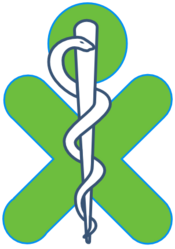Anatomy nutrition: Difference between revisions
No edit summary |
|||
| (One intermediate revision by one other user not shown) | |||
| Line 27: | Line 27: | ||
* Puzzle mode – a system is jumbled, put it back together. i.e. connect esophagus to stomach to small intestine … When put back together, animation shows you how the system works together. |
* Puzzle mode – a system is jumbled, put it back together. i.e. connect esophagus to stomach to small intestine … When put back together, animation shows you how the system works together. |
||
= Nutrition = |
= [[Nutrition]] = |
||
Next to the representation of the child is a table with food, tailored to the individual country. Clicking on food tells you what is in it. Dragging the food onto the child makes the child eat it. Highlights the parts of the body helped by the nutrients in that food |
Next to the representation of the child is a table with food, tailored to the individual country. Clicking on food tells you what is in it. Dragging the food onto the child makes the child eat it. Highlights the parts of the body helped by the nutrients in that food |
||
Balanced diet game – feed the child food from the table. Every piece eaten fills the appropriate proportion of a bin representing each important nutrient. Child tries to fill as many of the bins as possible before filling up the calorie bin. Calorie/nutrition requirements based on the age of the child who owns the laptop |
Balanced diet game – feed the child food from the table. Every piece eaten fills the appropriate proportion of a bin representing each important nutrient. Child tries to fill as many of the bins as possible before filling up the calorie bin. Calorie/nutrition requirements based on the age of the child who owns the laptop |
||
| Line 43: | Line 43: | ||
*This proposal will hinge on our ability to recruit several medical illustrators. There are several schools in the Chicago and Boston areas that offer the major. If we can convince a school to use our project as a class assignment, we’re good to go. Programming will be very manageable. We can compile content through the wiki while the interface is being created. |
*This proposal will hinge on our ability to recruit several medical illustrators. There are several schools in the Chicago and Boston areas that offer the major. If we can convince a school to use our project as a class assignment, we’re good to go. Programming will be very manageable. We can compile content through the wiki while the interface is being created. |
||
[[Category:Content]] |
[[Category:Content ideas]] |
||
[[Category:Nutrition]] |
[[Category:Nutrition]] |
||
[[Category:Health]] |
[[Category:Health]] |
||
Latest revision as of 20:00, 27 March 2008
This is a proposal. Your comments and criticism are encouraged. Please discuss on the discussion page.
Goals
- Anatomy
- Body parts
- Bones
- Organs
- Muscles
- How the body works
- Musculoskeletal system
- Nervous system
- Gastrointestinal system
- Cardiovascular system
- Body parts
- Nutrition
- What nutrients are in different common foods
- How those nutrients help different parts of your body
- How much of each nutrient a child should get
Unified Interface
One single-screen interface to access all information and games about these topics. Screen depicts child standing next to table. Several sliders and select button control how information is displayed on the child.
Anatomical reference
Representation of boy or girl – depending on the sex of the child owning the laptop – standing in standard anatomical position. Slider next to representation allows child to select different body systems to look at, ranging from standing in underwear, all the way down to cardiovascular system. Icons along the bottom of the screen let you change interaction mode.
- Standard mode – click a body part/bone/organ, info pops up about that item
- Find mode – computer asks you to find X, you have to move slider to the proper system view and select X
- Puzzle mode – a system is jumbled, put it back together. i.e. connect esophagus to stomach to small intestine … When put back together, animation shows you how the system works together.
Nutrition
Next to the representation of the child is a table with food, tailored to the individual country. Clicking on food tells you what is in it. Dragging the food onto the child makes the child eat it. Highlights the parts of the body helped by the nutrients in that food Balanced diet game – feed the child food from the table. Every piece eaten fills the appropriate proportion of a bin representing each important nutrient. Child tries to fill as many of the bins as possible before filling up the calorie bin. Calorie/nutrition requirements based on the age of the child who owns the laptop
Disease
It would be nice to incorporate disease into this interface, I have some ideas, but nothing that is as simple and intuitive as the above interface/activities
Notes
- Content will be developed in English,
- Representations of children will be of indeterminate race or national origin
- Localization will include:
- Translation
- Inputting nutrition info for local food, and new art for local foods
- This proposal will hinge on our ability to recruit several medical illustrators. There are several schools in the Chicago and Boston areas that offer the major. If we can convince a school to use our project as a class assignment, we’re good to go. Programming will be very manageable. We can compile content through the wiki while the interface is being created.
